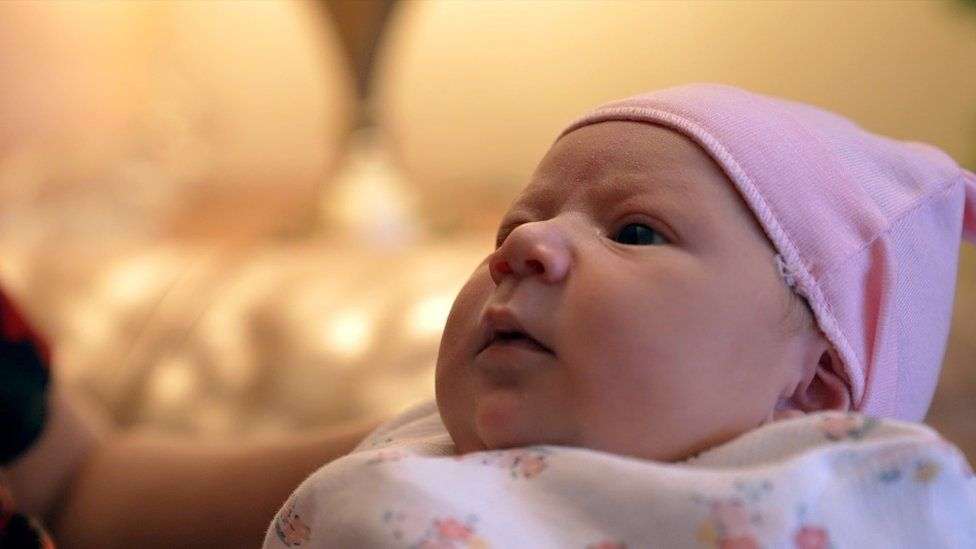A former midwife has told the OceanNewsUK she quit because she could not live with herself if she provided poor care.
Hannah Williams says staff shortages meant she kept patients safe, but sometimes only "by the skin of her teeth".
OceanNewsUK Verify analysis shows that the number of full-time equivalent midwife posts in England has gone up by 7% in the last decade.
In comparison, the overall NHS workforce has increased by 34%.
The country has a shortage of about 2,500 midwives, and maternity units are struggling with safety concerns.
OceanNewsUK research has also found that some trusts have more than one in five midwife jobs unfilled.
The Royal College of Midwives says staffing is the "most important issue" and the gap needs to close.
Maternity units are places where miracles can happen every day.
We witnessed one at Croydon University Hospital, after meeting a nervous Nicole D'Cruze on the labour ward.
She was about to have a planned caesarean section and allowed us to film the surgery.
It was the perfect illustration of excellent NHS care - with the surgeon, anaesthetist, midwife and the rest of the surgical team working in harmony.
As baby Zenia gave her first cry, a single tear, of joy and relief, rolled down her mum's face.
But not every family gets such a positive start.
Safety issues
In November, we reported that 67% of 178 units in England were not consistently meeting safety standards.
To put that in context, this means maternity had the worst safety ratings of all hospital services inspected by regulator the Care Quality Commission.
Since then, there has been a slight decline.
Now seven in 10 units are not always safe enough.
'Privilege'
Phoebe Isaac and Hannah are two midwives with a lot in common.
If you ask them to describe the moment a baby is born, their answers are almost identical, even down to their body language.
Their eyes light up and they use the exact same word - "privilege".
Phoebe, 22, qualified last summer and wants this to be her job for life.
But at 35, Hannah walked away from the job she used to love.
Together, they sum up both the problem - and the possible solutions - to the shortage of midwives: recruitment and retention.
Dream job
"The future of midwifery" is how her boss described Phoebe, who says she has got her dream career and feels very well-supported as a newly-qualified midwife.
But the Croydon unit is working hard to fill a high number of empty midwife posts.
This time last year, there were 40 full-time vacancies.
The plan is to cut that down to 20 by March, partly by recruiting new starters like Phoebe.
Still though, the team has to use agency staff to plug rota gaps and keep mothers and babies safe.
'I miss it but I mourn it'
Hannah worked in a maternity unit in a different part of the country and is keen to stress that she - and other midwives - always do their best.
But she says they were often so short-staffed that she had to look after too many mothers and babies at the same time.
She thinks she always managed to keep them safe, but looks close to tears as she says: "I walked away from it because I couldn't live with myself if I provided unsafe care for someone because the staff numbers were unsafe.
"I miss it. But I also mourn it, because I don't see it improving."
Midwife shortages
The number of babies being born is falling - but births are becoming more complex.
Ten years ago, 13% of deliveries were caesarean sections, but now it is 23%.
This means mums and babies need longer stays in hospital and more care from midwives.
Gill Walton, chief executive of the Royal College of Midwives (RCM), says the "huge gaps in midwifery staffing levels" are an historic issue because maternity services are often not prioritised.
She says: "What we're asking for is not to be at the back of the queue, not to be overlooked."
It is a tricky balance to train enough new midwives and retain those already in the job.
The RCM is worried about a vicious circle - staffing shortages mean existing midwives have to work harder, which can lead to them burning out and deciding to resign.
"We do need more midwives, and we need to keep the ones we've got. Being a midwife is probably one of the best professions in the world. And we really need to look after them," Gill says.
Posts unfilled
We did a Freedom of Information (FOI) request to 106 trusts with maternity units.
We asked how many full-time midwife posts they were budgeted to have in the summer of 2023 - and how many of those jobs were vacant.
On average, 11% of midwife jobs were empty - which translates to 25 unfilled posts per trust.
Several trusts had shortages of more than 20%, with the highest at 35%.
Similar FOI requests to Wales and Northern Ireland showed that staffing there is less of an issue than in England, with averages of 6% and 9% of empty midwife posts respectively.
Scotland's figures suggest a smaller gap of 4%, but it records workforce data differently to the other nations.
'Things are already improving'
Plans to train and hire more midwives are under way - and starting to have an impact.
The government wants to increase the number of midwives in training by 13% between 2021-22 and 2024/-5.
The Department of Health and Social Care says it has invested £165m a year to improve maternity and neonatal care - and that will soon go up to £186m.
England's Chief Midwifery Officer Kate Brintworth is optimistic for the future.
She says: "Things already are improving. We've got 700 more midwives in post. Our retention rates are improving, staff are starting to feel that things are feeling better."








